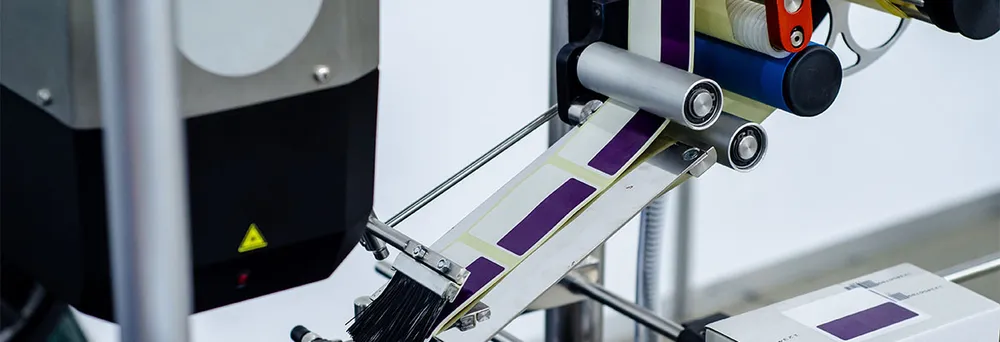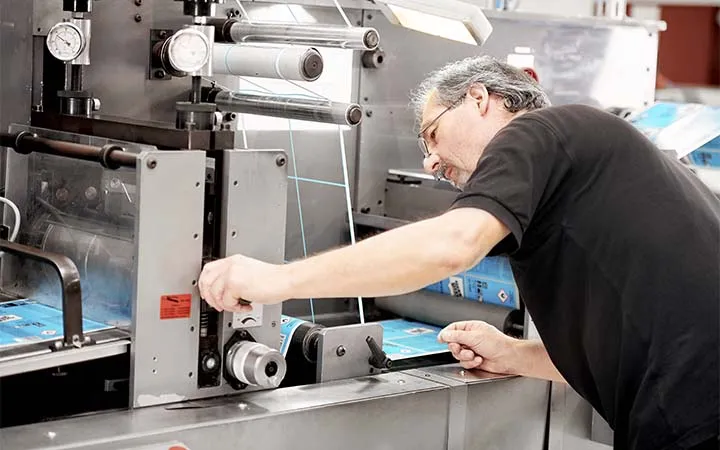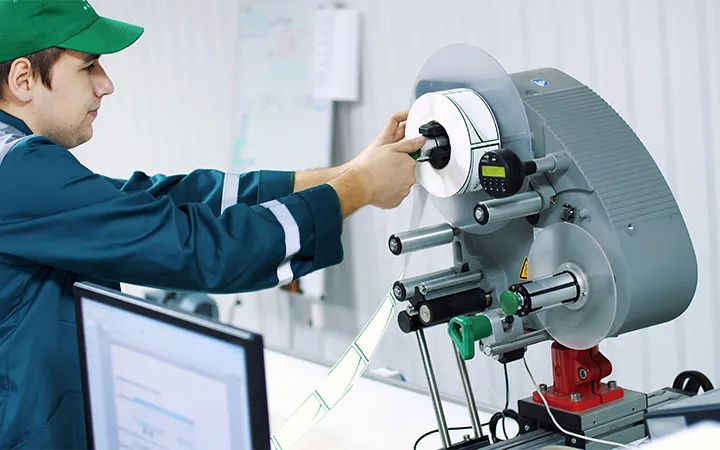
Labels Winding direction
In addition to the roll core, the carrier material and the label type, the winding direction is also an important factor for the correct dispensing of labels. Correct positioning and winding of the labels is essential for a smooth production process, especially in automated production processes.

Definition of winding direction
The winding direction indicates how the labels are applied to the carrier material and the roll core. The winding direction is essential for problem-free labelling, especially in machine processing. The term winding direction covers several parameters:
- The inner and outer winding of the label roll
- Longitudinal or transverse positioning of the labels on the backing material
- The position of text and images on the label
All three factors are decisive for all further processes such as reprinting or dispensing. In rare cases, the winding direction is also referred to as the running direction - a term that is used in paper production and refers to the alignment of the paper fibres to the running direction during processing.
Winding direction for labels
The winding direction of the labels does not play a major role in manual dispensing - it is different in fully automated processes where the labels are applied by labelling machines. The machines are set precisely to the formats to be dispensed and only apply the labels in the specified position. If a roll is inserted in the wrong winding direction, this has an impact on the entire process sequence and leads to incorrectly labelled goods or parcels.

What winding orientations are available for roll labels?
With labels, the winding direction not only stands for the orientation on the carrier material, but also for the way in which the labels are wrapped onto the roll core. With outer winding, the roll labels are on the outside of the roll and are therefore visible. With inner winding, the labels are on the inside of the carrier film and cannot be seen from the outside.
The length and width of the labels determine whether they are placed on the carrier material in portrait or landscape format. The direction is differentiated into head or foot first and right and left side first. The properties of the label dispenser are decisive for this.
Winding scheme
| Inside wound – Crosswise | Inside wound – Lengthwise | Außenwicklung - Quer | Außenwicklung - Längs |
| Foot ahead | Foot ahead | Foot ahead | Foot ahead |
| Head first | Head first | Head first | Head first |
| Left side ahead | Left side ahead | Left side ahead | Left side ahead |
| Right side ahead | Right side ahead | Right side ahead | Right side ahead |
Winding direction when dispensing the labels
There are two options for applying labels to products or product packaging: Labelling by hand - also using label dispensers or hand labellers - or automatic application using a labelling machine.
Labelling by hand
Type your text
Applying the label to the product or packaging by hand is particularly worthwhile for small production quantities - automated application using machines is only worthwhile for larger production quantities. Nevertheless, table label dispensers or manual labellers are also often used for manual application. The possibilities are therefore many and varied:
- Labels labelled and glued by hand
- Printed labels and thermal labels that are applied by hand
- Labels applied automatically with label dispenser (some with print unit)


Labelling with a machine
If you have a large number of labels to apply, it is worth investing in a labelling machine, which should be selected according to the following criteria:
- The required dispensing speed
- Dispensing accuracy
- Imprint options
- Integration into existing production processes
It should be noted here that not every label is suitable for automatic dispensing - adhesion, bending stiffness and label size play an important role in the successful application of the labels. The label dispenser and the labels to be applied must be perfectly matched so that the application process can take place without any problems.
Conclusion
The winding direction of the labels is particularly important for automatic dispensing in automated production processes and for high production volumes. The parameters of the labelling machine, which are decisive for the winding and running direction of the labels on the backing material, are crucial here.




